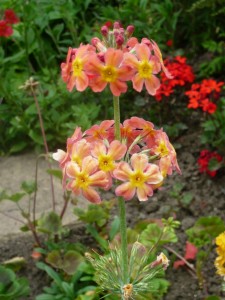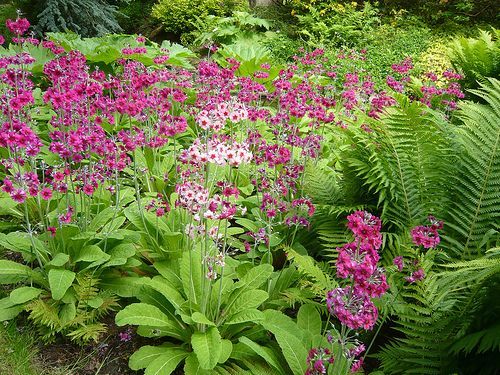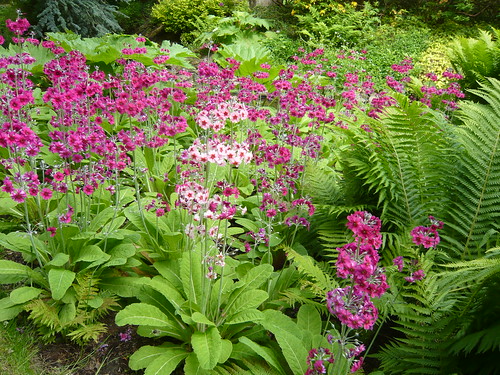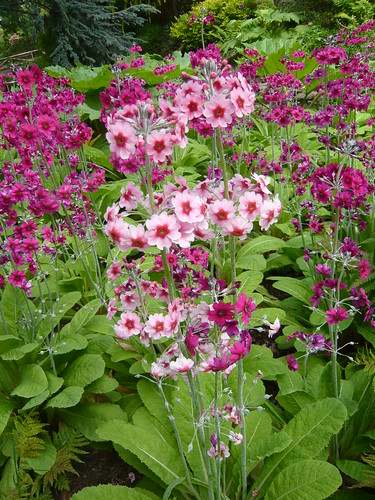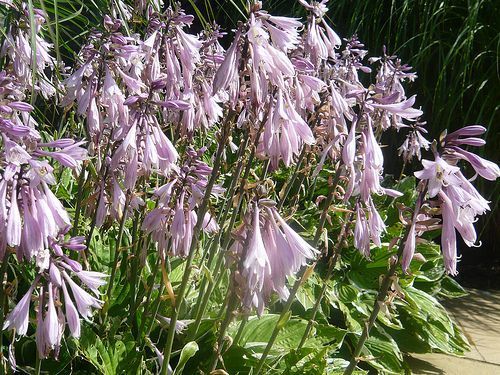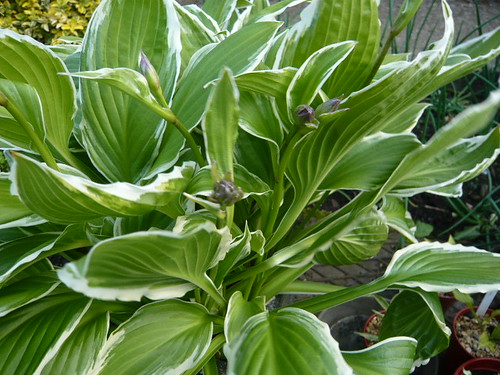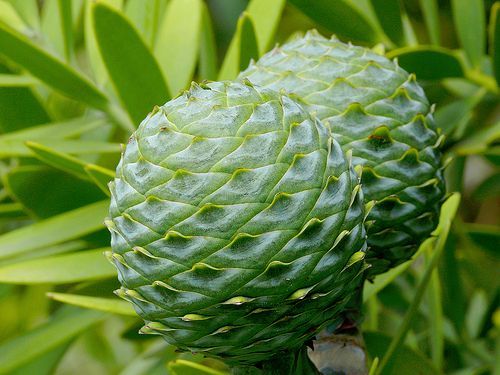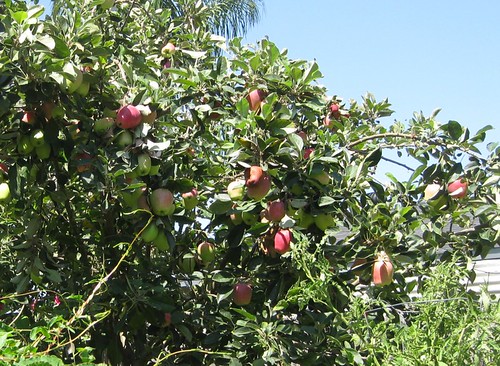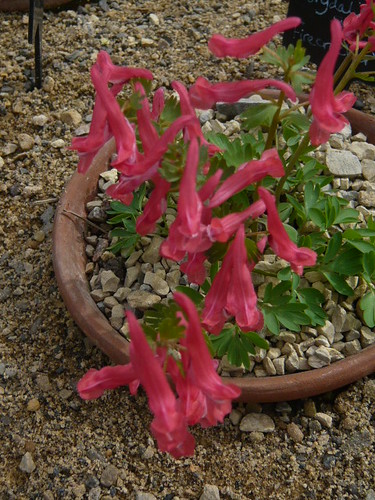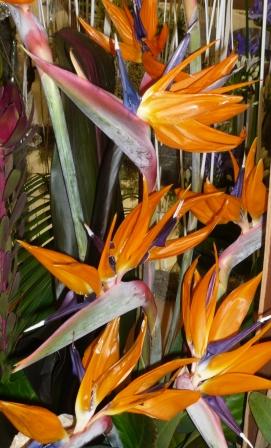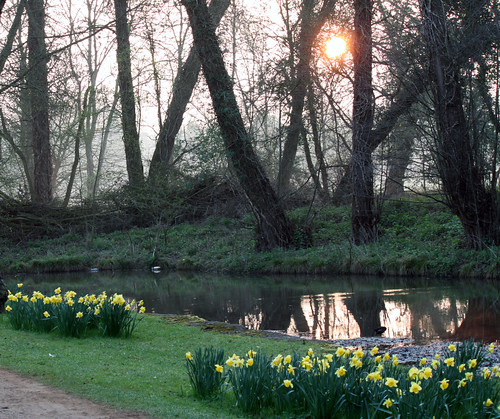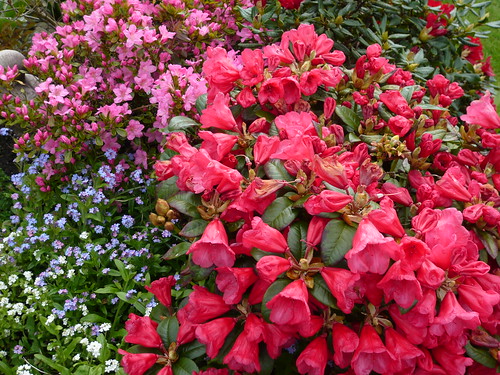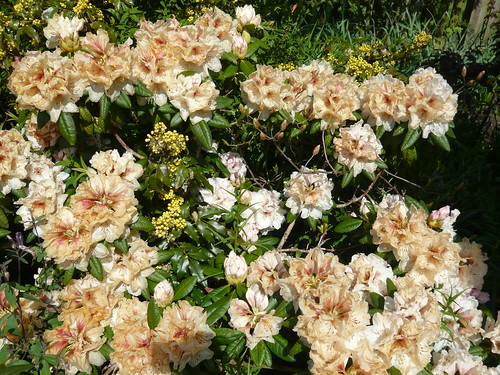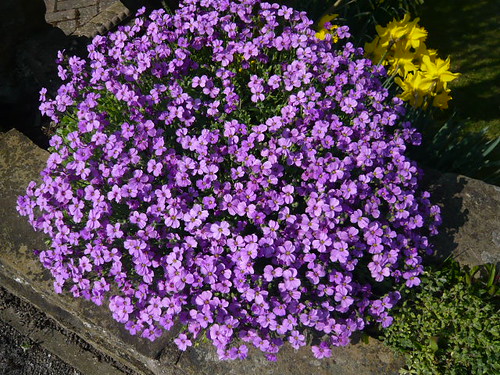Grow Primula Candelabra Species
Colourful Candelabra Primulas are great plants for shady damp locations. They originate from China and the Himalaya and are ideal for woodland, streamsides or damp banks. There are many species, hybrids and varieties to grow and collect.
Description of Candelabra Primula
- Candelabra Primulas make clumps of strong oblong shaped leaves often persisting through the winter .
- Primula from the Proliferae section send up tall stems on which there are whorls of ten flowers, each ring opening in succession, perhaps one every five or six days.
- There can be up to six or seven whorls that gives a long flowering period from May.
- There is a mass of colour from brilliant orange or yellow, purple, red, pink, white, even dark maroon.
- There is often a powdery white ‘farina’ or white meal on the stems and leaves.
- Plants can grow and flower 24″-36″ tall.
Candelabra Primula Species and Varieties
- Candelabra Primula pulverulenta purple to mauve flowers.
- Primula Bulleesiana is one of the strongest and easiest candelabra varieties to grow.
- Primula helodoxa golden yellow flowers up to 3 feet high.
- Primula beesiana from Yunnan in China. Has rose-purple flowers. P. bulleyana is similar but with orange flowers and grows to 2 feet high.
- Harlow Carr Candelabra hybrids show how easily these species cross fertilise. In addition to Harlow Carr gardens there is a good show of flowers at Picton Castle gardens in Pembrokeshire.
- Candelabra Primula poissonii has vivid purple flowers with a distinct golden yellow centre.
- Primula aurantiaca has late flowering orange or yellow whorls of flowers.
- Primula cockburniana have whorls of ten or so flowers with each ring opening in succession.
- Primula secundiflora thinner purple flowers, not my favourite.
- Many Primulas from the Primula japonicas including ‘Apple Blossom’ are candelabra varieties from the Proliferae section
- Primula pulverulenta Bartley hybrids available from Kevock Garden
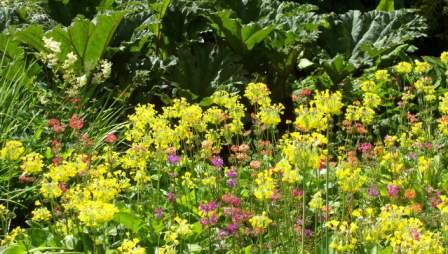
This photo was taken in summer 2008 at RHS Harlow Carr in Yorkshire. The garden is renown for its variety of Candelabra Primula Hybrids.
Grow Candelabra Primula
- Candelabra Primulas prefer partial shade and can only be grown in a sunny position if the soil is always moist.
- Plants grow best in deep, peaty soil or any soil rich in well rotted organic matter.
- Primulas prefer winter and spring light values that are weaker than in high summer
- There are hybrids between Primula bulleyana and Primula beesiana flowers in varying cerise shades
Simple Primula Tips
- Candelabra Primulas or Bulleesiana are easy to grow from seed that can be bought from RHS shops. Many primulas do not come true to seed.
- From Harlow Carr hybrids you get a range of pastel colours which themselves self seed.
- They like damp roots and these particular primulas were growing on the banks of a stream
- Candelabra primulas get there name from the whorls of flowers blossoming in a tiered effect part way up the stem as well as at the top.
- There are over 350 species of Primula and they would make an excellent subject for building a collection.
- Primulas can be divided if you want a plant true to type
One of the best book currently available is Primula by John Richards
